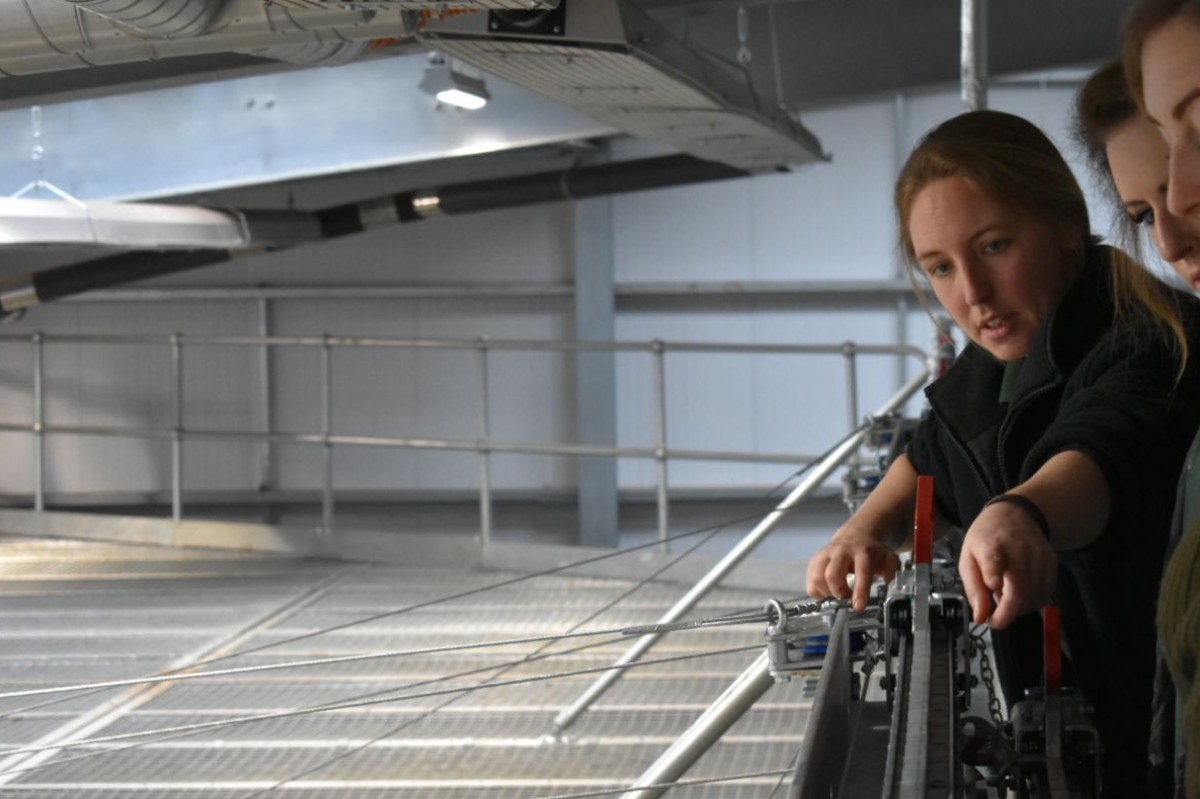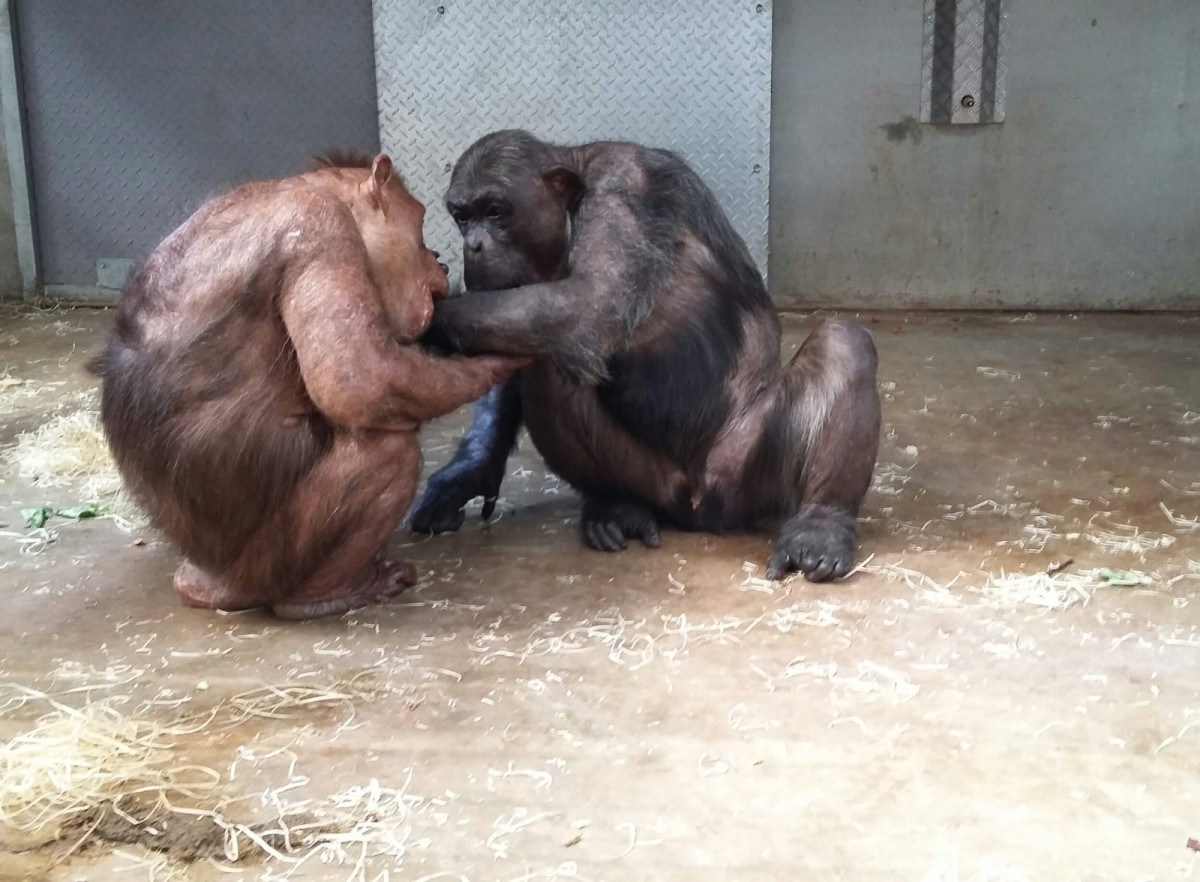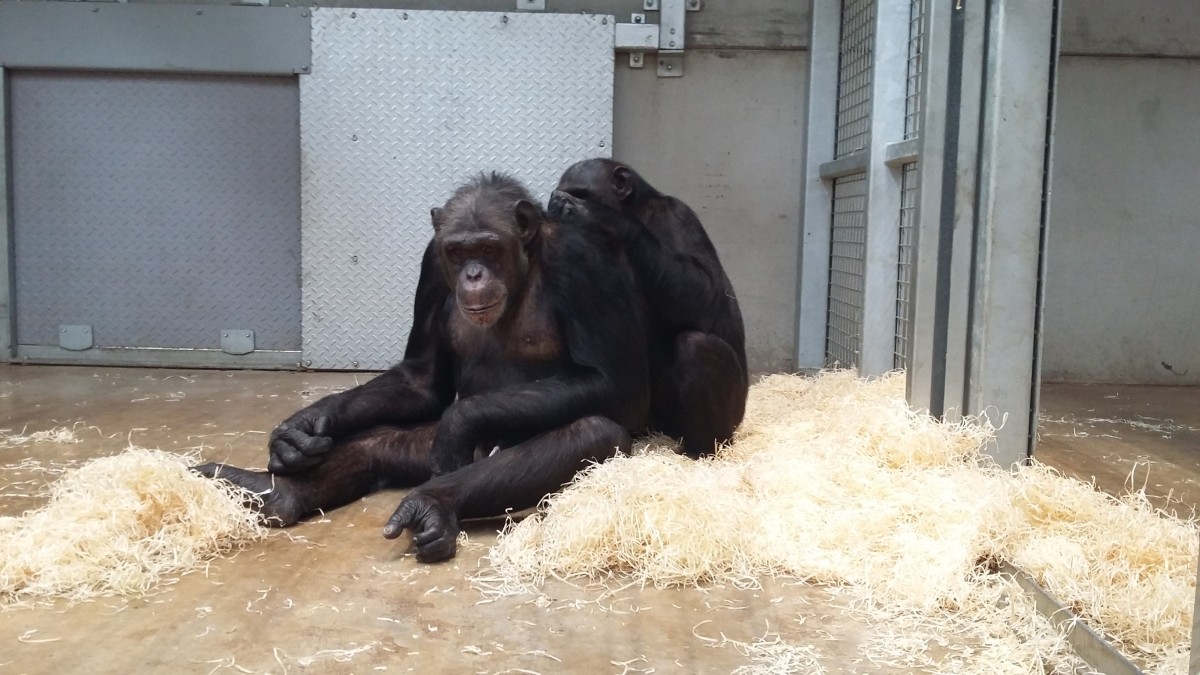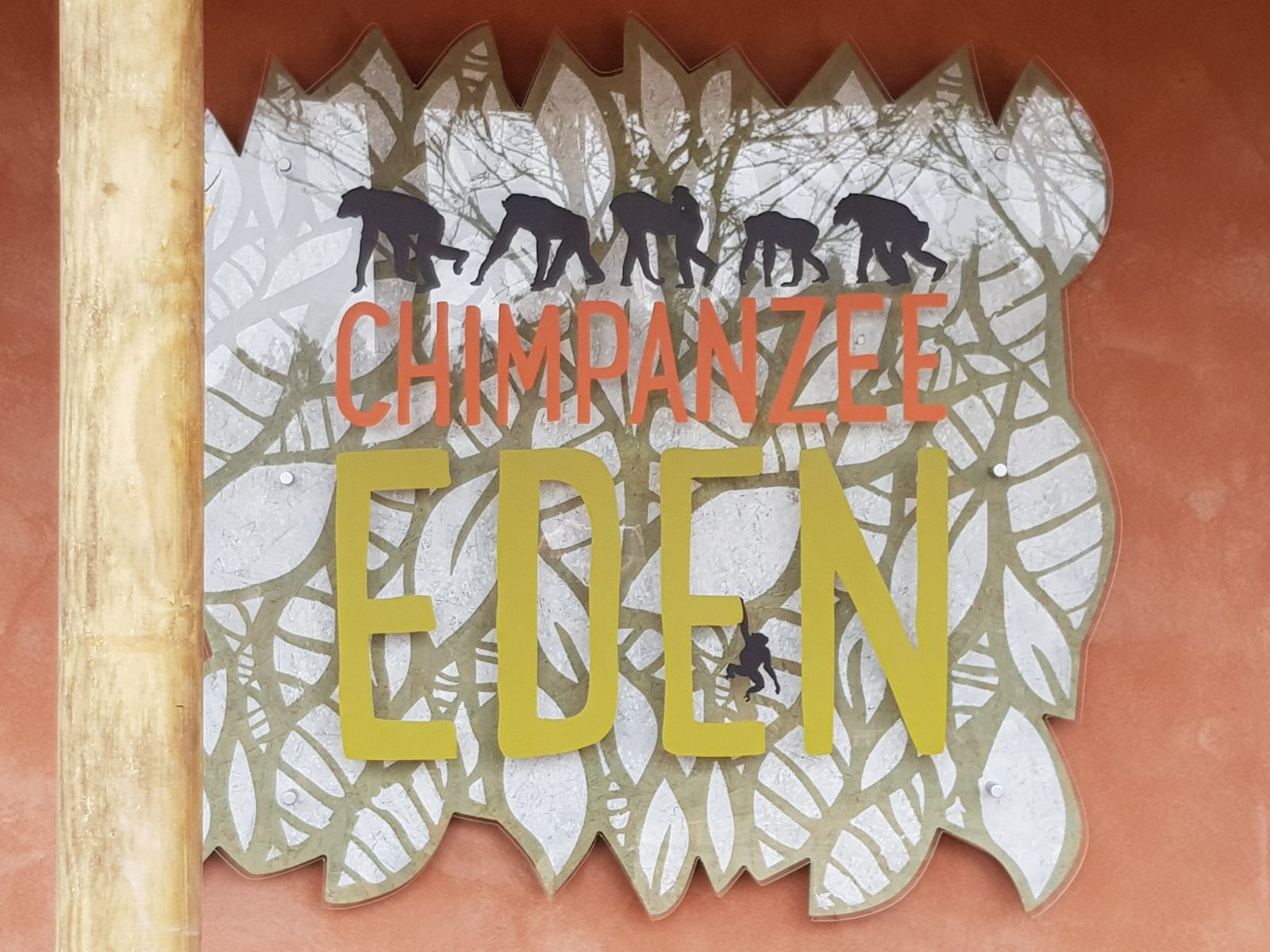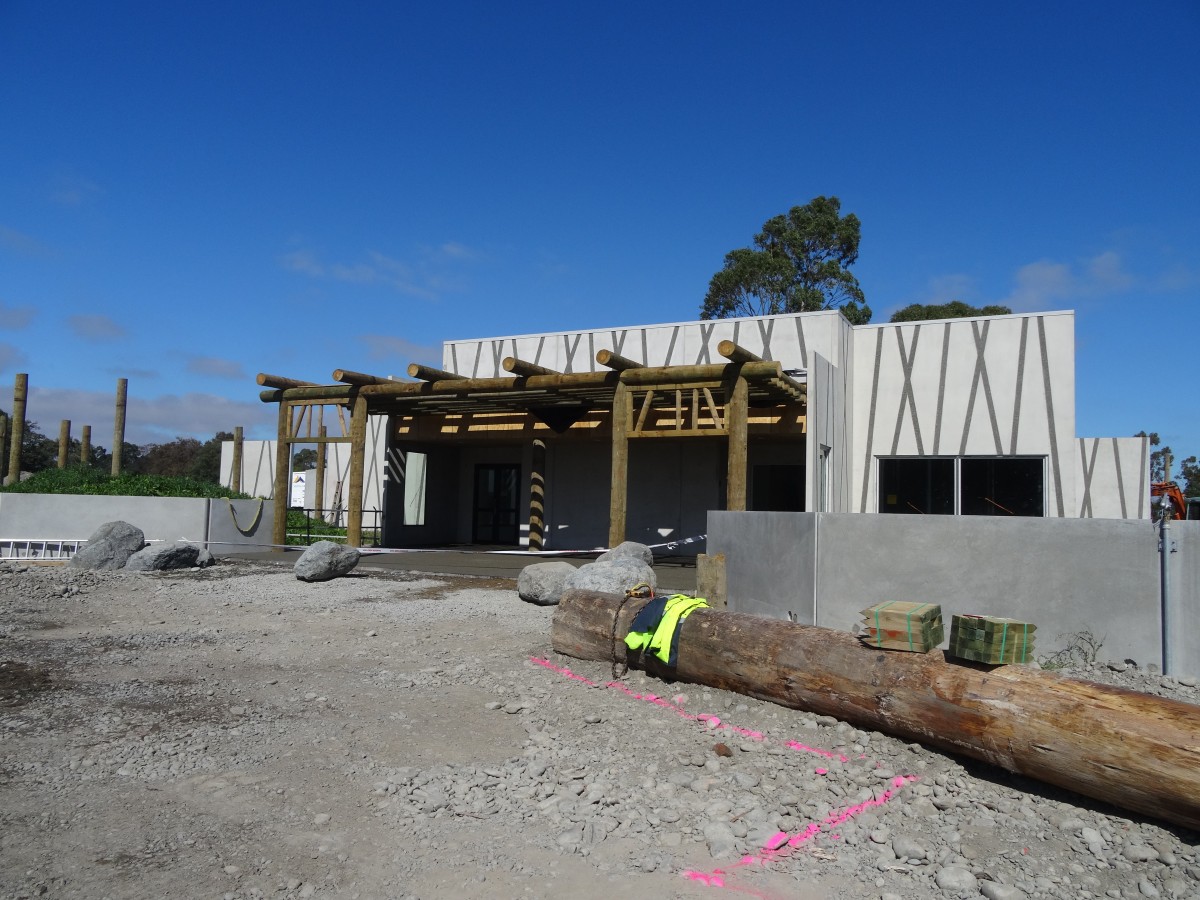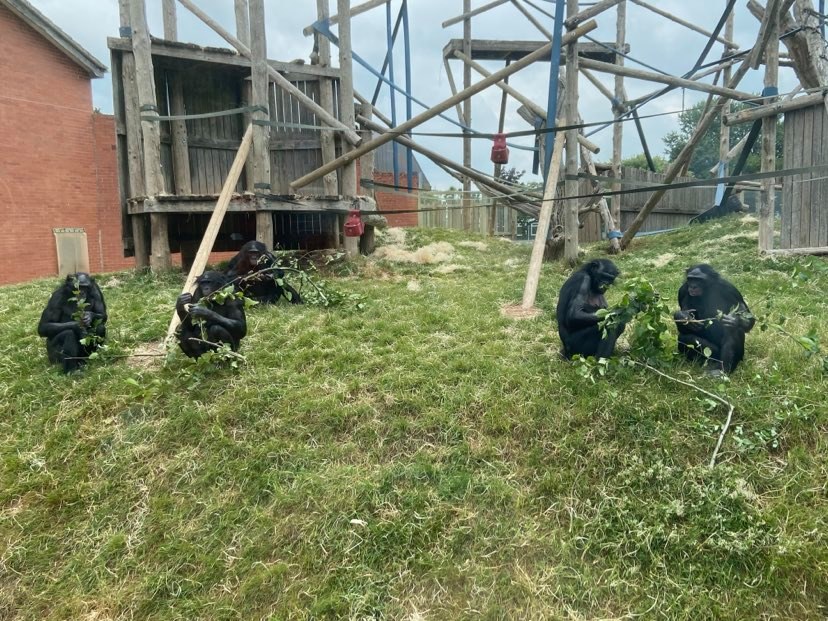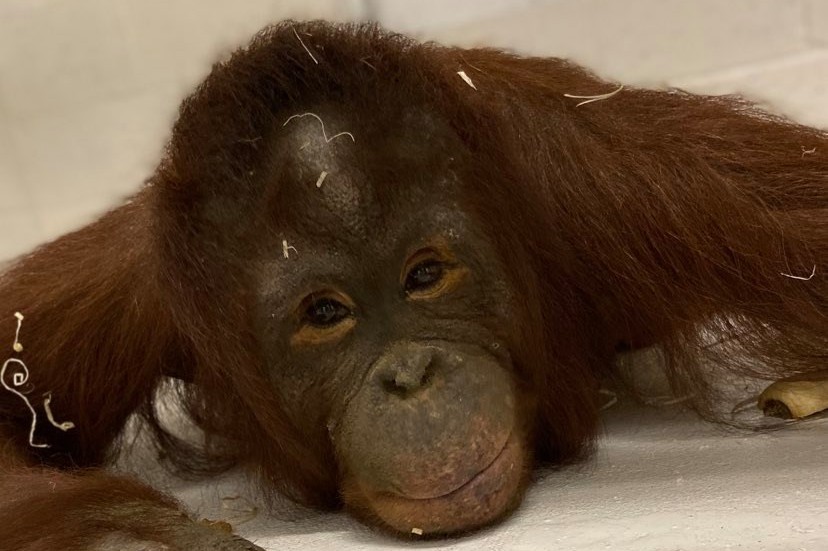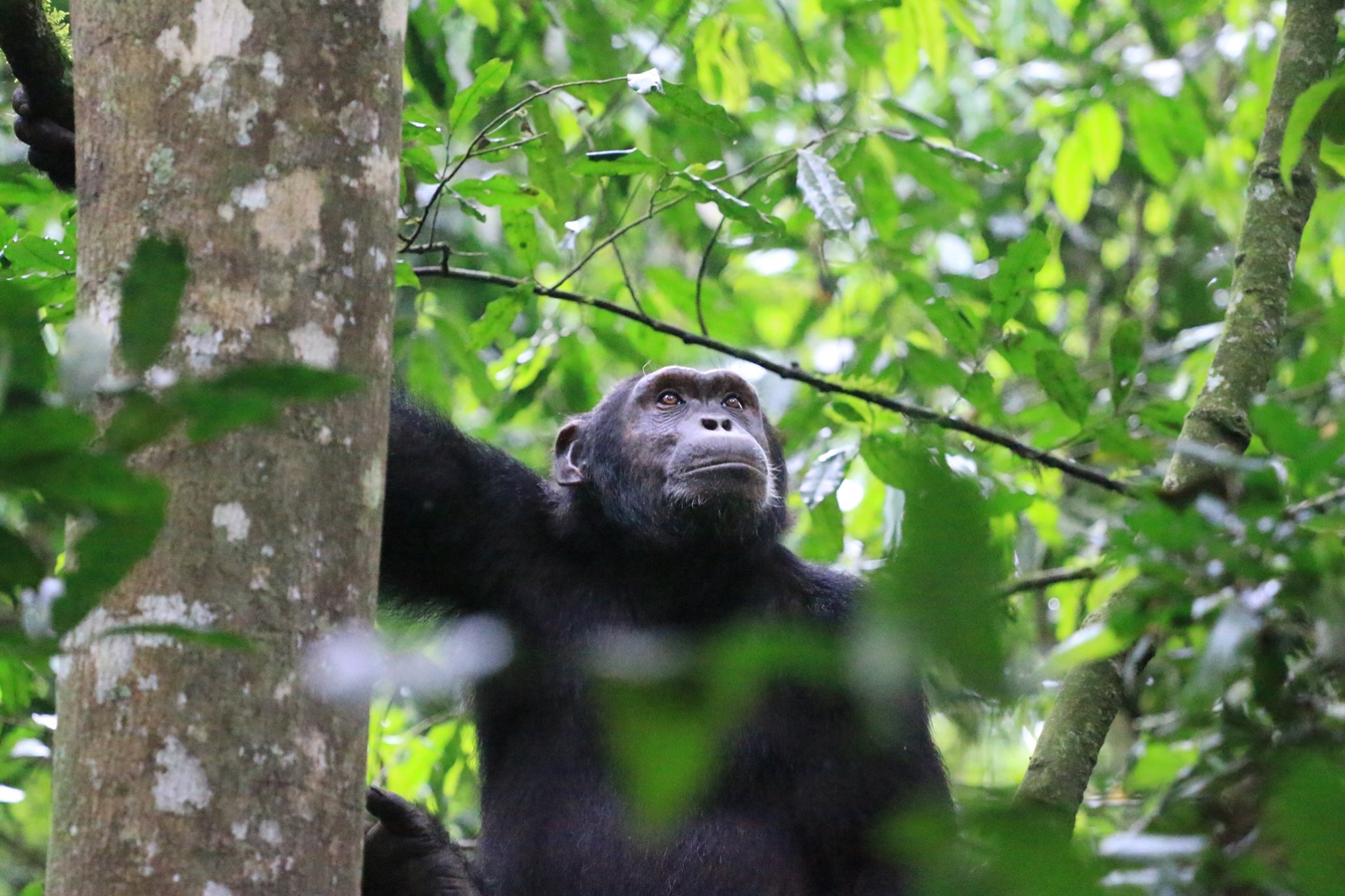Chimpanzee Eden
Past projects >> Chimp eden

a new enclosure
In 2018 a purpose built, state of the art enclosure was designed for Twycross Zoo's 17 chimpanzees, so for the first time since its opening in 1963 all of the zoo’s chimps could be housed under the same roof in one large natural troop.
The great ape team were responsible for training, moving and integrating the chimps in their new home as well as furnishing the exhibit, creating routines and operating procedures.
Once the team had access the first task was to furnish the two large day places, five large beds and outside areas. Building on joint research with the University of Birmingham on the optimal placement of soft furnishings to encourage natural locomotion, our approach combined both science and years of practical experience.
The day areas were first webbed using tough seat belt strapping, creating both vertical and horizontal pathways through the exhibit. The webbing is both weather proof and flexible making it the ideal material to replicate the moving branches of the chimpanzees natural forest home.
Other furnishings were made from webbing as well as other materials to create swings, hammocks, seats and visual barriers throughout both the inside and outside areas. Small pieces of webbing were also hung from the nest baskets to encourage nest weaving behaviour, whilst netting and other less natural looking items were reserved for the off show den areas.
The great ape team were responsible for training, moving and integrating the chimps in their new home as well as furnishing the exhibit, creating routines and operating procedures.
Once the team had access the first task was to furnish the two large day places, five large beds and outside areas. Building on joint research with the University of Birmingham on the optimal placement of soft furnishings to encourage natural locomotion, our approach combined both science and years of practical experience.
The day areas were first webbed using tough seat belt strapping, creating both vertical and horizontal pathways through the exhibit. The webbing is both weather proof and flexible making it the ideal material to replicate the moving branches of the chimpanzees natural forest home.
Other furnishings were made from webbing as well as other materials to create swings, hammocks, seats and visual barriers throughout both the inside and outside areas. Small pieces of webbing were also hung from the nest baskets to encourage nest weaving behaviour, whilst netting and other less natural looking items were reserved for the off show den areas.
training
Once the facility was furnished the team practiced using the whole enclosure and safe working practices, standard operating procedures and other protocols were developed. A rough routine was also devised in preparation for the arrival of the chimps.
Extensive preperations were made to get ready for the move. Intensive training was conducted by the great ape team to prepare the chimps for hand injection to move to the new facility.
A groupings plan was created for the move, to take into account the social implications of splitting the group. Due to having several fairly dominant males and multiple strong females the timing and order of moving the animals was particularly important as the move would be conducted over several days. To avoid leaving the group without the dominant male and to ensure young males vying for dominance weren’t left unchecked it was decided to move the animals in groups of four with the dominant males being moved together. Female groups were also carefully selected to ensure they felt comfortable in the new house during the move and to avoid potential personality clashes.
The chimps were currently living in two groups, the first group of 13 were hand injected, health checked and moved over to the new enclosure and re integrated into their group. Once they had settled, a new routine was developed to ensure the animals would move easily around the exhibit to enable all areas to be accessed for cleaning.
Several months later the second group of 4 was moved over to the new enclosure in one day. All were separated, hand injected, health checked and moved into one side of the new enclosure without issue. Again after some time a routine was developed and integrations between the two groups could begin.
Extensive preperations were made to get ready for the move. Intensive training was conducted by the great ape team to prepare the chimps for hand injection to move to the new facility.
A groupings plan was created for the move, to take into account the social implications of splitting the group. Due to having several fairly dominant males and multiple strong females the timing and order of moving the animals was particularly important as the move would be conducted over several days. To avoid leaving the group without the dominant male and to ensure young males vying for dominance weren’t left unchecked it was decided to move the animals in groups of four with the dominant males being moved together. Female groups were also carefully selected to ensure they felt comfortable in the new house during the move and to avoid potential personality clashes.
The chimps were currently living in two groups, the first group of 13 were hand injected, health checked and moved over to the new enclosure and re integrated into their group. Once they had settled, a new routine was developed to ensure the animals would move easily around the exhibit to enable all areas to be accessed for cleaning.
Several months later the second group of 4 was moved over to the new enclosure in one day. All were separated, hand injected, health checked and moved into one side of the new enclosure without issue. Again after some time a routine was developed and integrations between the two groups could begin.
Introductions
Training as many of the chimps as possible for separation was necessary to ensure introductions of all animals would be possible. The introductions were broken down into pairs and groups of four. Ideally each chimp from the small group would meet each chimp individually from the large group however two of the chimps from the small group were mother and son who had never been separated (apart from medical procedures and to move to the new exhibit) and were not going to be able to be separated on a regular basis to be introduced individually so it was decided they were to be introduced in pairs.
By looking at each individuals behaviour, past experiences and personalities the team were able to devise the best pairings for introductions to begin. Some animals were introduced on a one on one basis and some in groups of twos but it is extremely important that everyone was introduced to each other at least once and that different pairings were trialled as certain individuals may behave very differently towards a newcomer in the presence of others. It was also very important to ensure the dominant male got plenty of time to socialise with all four animals that would be joining his troop to allow alliances to be formed and hierarchies to be established.
Next, more group introductions would be conducted and spending longer stretches together. Due to unforseen circumstances the introductions were put on hold but by using the records of the behaviours seen in the introductions so far certain animals would be selected to move over from the large group to the smaller group one by one until all animals are together.
By looking at each individuals behaviour, past experiences and personalities the team were able to devise the best pairings for introductions to begin. Some animals were introduced on a one on one basis and some in groups of twos but it is extremely important that everyone was introduced to each other at least once and that different pairings were trialled as certain individuals may behave very differently towards a newcomer in the presence of others. It was also very important to ensure the dominant male got plenty of time to socialise with all four animals that would be joining his troop to allow alliances to be formed and hierarchies to be established.
Next, more group introductions would be conducted and spending longer stretches together. Due to unforseen circumstances the introductions were put on hold but by using the records of the behaviours seen in the introductions so far certain animals would be selected to move over from the large group to the smaller group one by one until all animals are together.
Past projects
